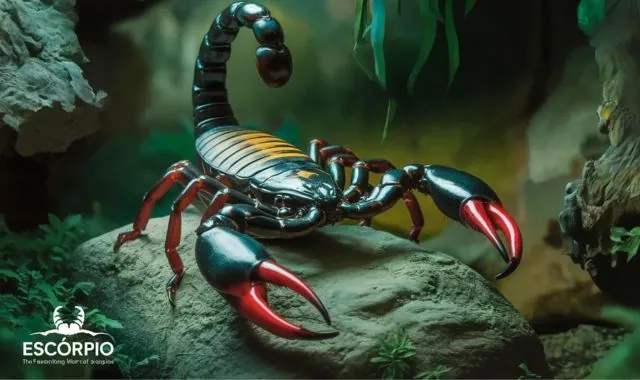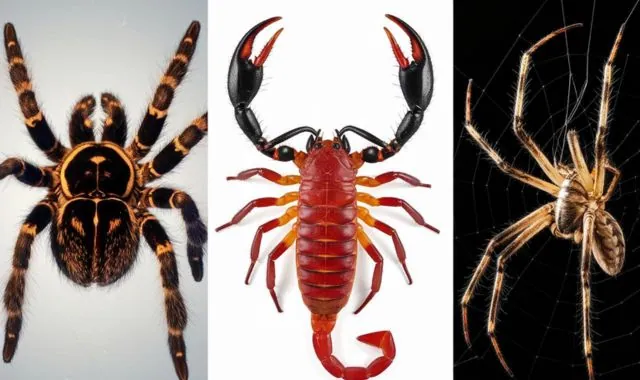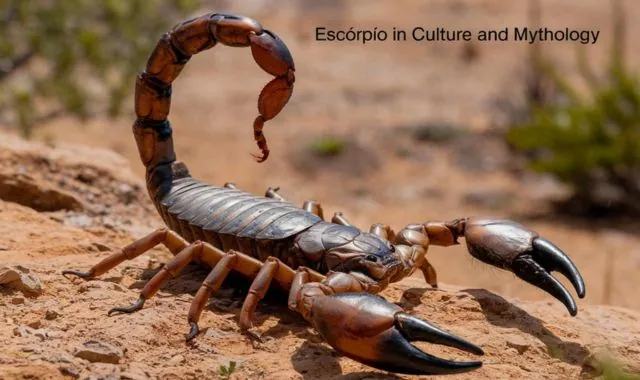Physical Address
304 North Cardinal St.
Dorchester Center, MA 02124

If you’ve ever been captivated by the mysterious allure of scorpions, you’re not alone. The term “Escórpio” might evoke images of these intriguing arachnids, but what exactly is an Escórpio, and why does it command such fascination? Let’s dive into the world of Escórpio and explore what makes this creature so compelling.

At its core, “Escórpio” refers to scorpions, a diverse group of arachnids known for their predatory nature and distinctive appearance. Scorpions are easily recognized by their segmented bodies, pincers, and venomous stingers. These creatures have existed for hundreds of millions of years, making them some of the most ancient and resilient species on Earth.
Scientifically, scorpions belong to the order Scorpiones. Within this order, there are various families and species, each with unique characteristics. The main families include the Buthidae, known for their potent venom, and the Scorpionidae, which are larger and more robust. Understanding their classification helps us appreciate the diversity within this fascinating group.
What sets Escórpio apart from other arachnids? For starters, their venomous sting is a key feature. This venom varies in potency, with some species possessing venom that can be fatal to their prey. Additionally, many scorpions have a unique ability to fluoresce under ultraviolet light due to a substance in their exoskeleton, adding to their enigmatic appeal.
Scorpions play a crucial role in their ecosystems. They are natural pest controllers, preying on insects, spiders, and other small creatures. This predatory behavior helps regulate the populations of these pests, maintaining ecological balance. By understanding their role, we gain insight into the delicate web of life that scorpions are a part of.
Escórpios vary greatly in size, from small species measuring just a few centimeters to larger ones that can reach up to 20 centimeters, including their tails. Their bodies are segmented and covered with a tough exoskeleton, which provides protection and support. The tail, often curved and tipped with a stinger, is a defining feature and is used both for defense and hunting.
Coloration in scorpions ranges from earthy browns and tans to vibrant yellows and greens. Some species display intricate patterns that help them blend into their surroundings, offering camouflage against predators and prey. This adaptive coloration is crucial for their survival, allowing them to remain hidden in their natural habitats.
Escórpios are incredibly adaptable and can be found in a variety of environments. They thrive in deserts, rainforests, grasslands, and even mountainous regions. Their ability to survive in such diverse habitats speaks to their resilience and adaptability.
To cope with their environments, Escórpios have developed several adaptations. For instance, desert scorpions have evolved to withstand extreme temperatures and conserve water. Rainforest species, on the other hand, are adapted to high humidity and dense vegetation. These adaptations ensure their survival across different ecological zones.

Escórpios are primarily carnivorous, feeding on a diet of insects, spiders, and small vertebrates. Their hunting technique involves using their pincers to grasp prey and their venomous sting to immobilize it. Some species are nocturnal hunters, actively searching for food at night when their prey is more active.
Most scorpions are solitary creatures, preferring to live alone and only coming together for mating. However, there are exceptions. Some species display social behavior, forming small groups or colonies. These social scorpions might share shelters or collaborate in hunting, showcasing a fascinating aspect of their behavior.
Throughout history, scorpions have held symbolic significance in various cultures. In ancient Egypt, the scorpion was associated with the goddess Serqet, who was believed to protect against venomous creatures. This association highlights the scorpion’s role as both a fearsome predator and a symbol of protection.
In contemporary times, Escórpios are often featured in media and popular culture. They are symbols of danger, resilience, and mystery. From tattoos to films, the scorpion’s intense appearance and behavior continue to captivate our imagination.
While scorpions are not currently considered endangered, some species face threats due to habitat destruction and other environmental changes. Monitoring their populations is essential to ensure that these fascinating creatures continue to thrive.
Human activities, such as urban development and deforestation, pose significant threats to scorpions. Habitat loss can lead to declines in their populations, disrupting the ecological balance they help maintain. Conservation efforts are needed to protect their natural environments.
Climate change presents another challenge. Alterations in temperature and weather patterns can affect scorpions’ habitats, leading to shifts in their distribution and impacting their survival. Addressing climate change is crucial for the long-term preservation of scorpions.
To support scorpion conservation, we can advocate for habitat protection, support sustainable practices, and raise awareness about their ecological importance. By taking these actions, we can help ensure that scorpions remain a vital part of our world for years to come.

Escórpio, with its blend of mystery and ecological importance, is a creature that continues to intrigue and inspire. From its unique physical traits and behavior to its role in culture and the challenges it faces, understanding Escórpio helps us appreciate the complexity of the natural world. By learning about and protecting these fascinating arachnids, we contribute to the preservation of biodiversity and the balance of our ecosystems.
Yes, all scorpions have venom, but its potency varies. While most scorpions have venom that is harmful only to their prey, a few species can deliver a sting that is dangerous to humans.
Scorpions use their pincers to grasp and manipulate prey, as well as to defend themselves. They are also used in mating rituals and interactions with other scorpions.
Yes, many scorpions have a unique ability to fluoresce under ultraviolet light. This glow is due to a substance in their exoskeleton and is thought to play a role in their behavior and interactions.
Scorpions generally live for 2 to 6 years, depending on the species. Some can live longer in captivity with proper care.
Supporting habitat conservation, promoting awareness about their ecological role, and advocating for sustainable practices are effective ways to help scorpions.